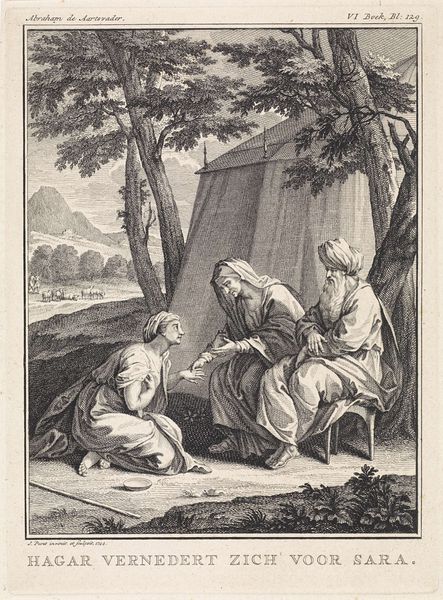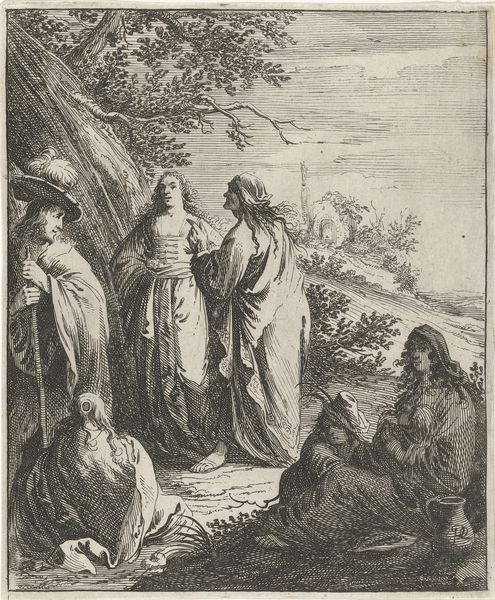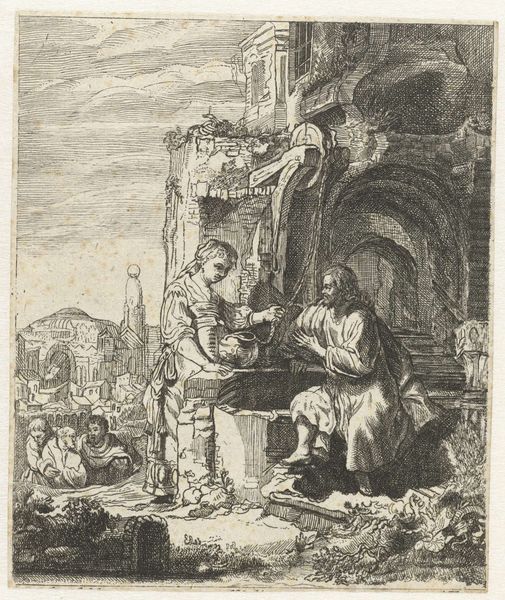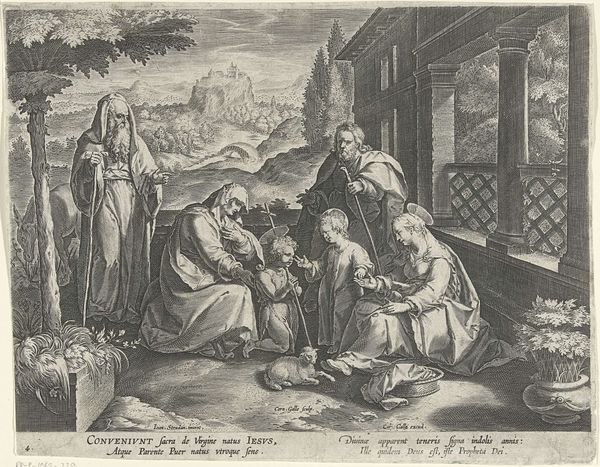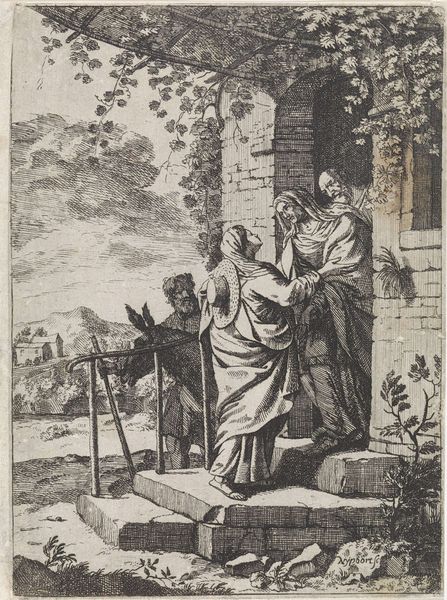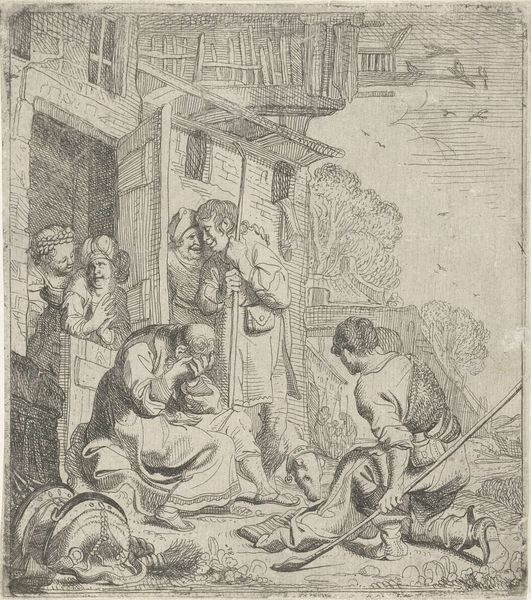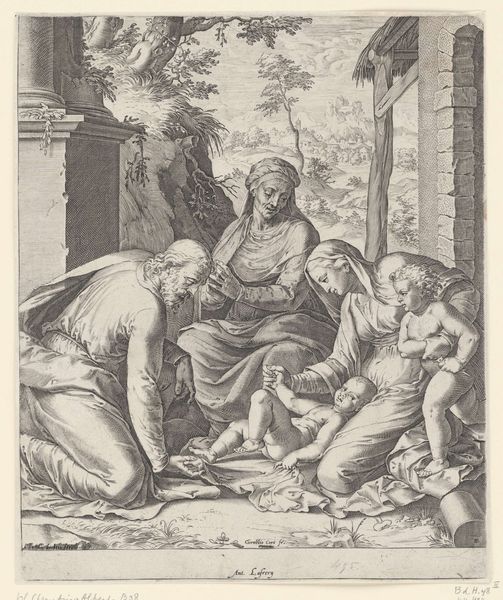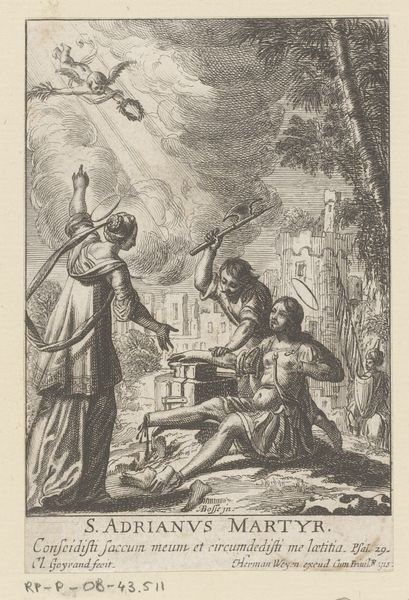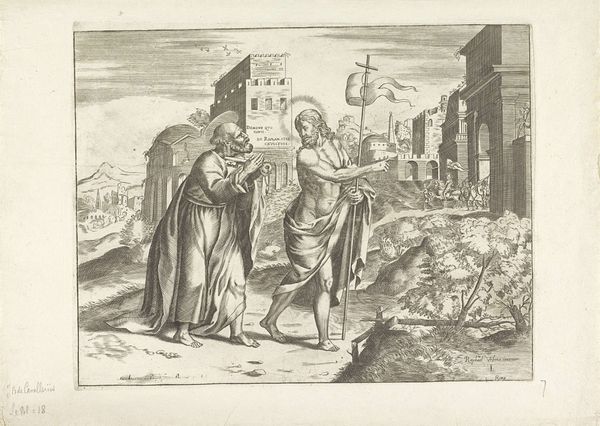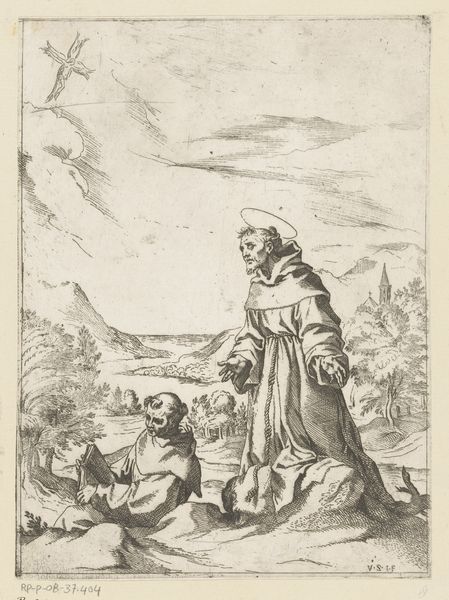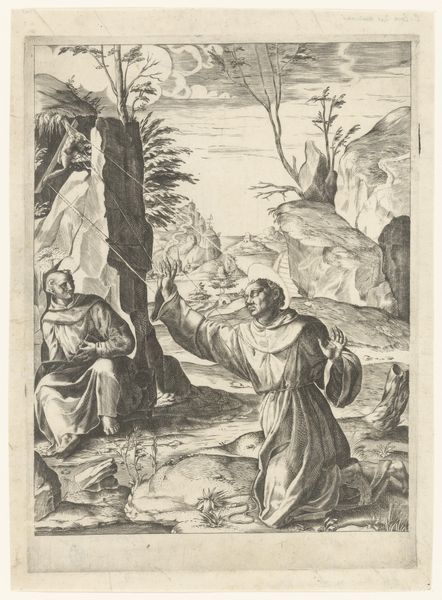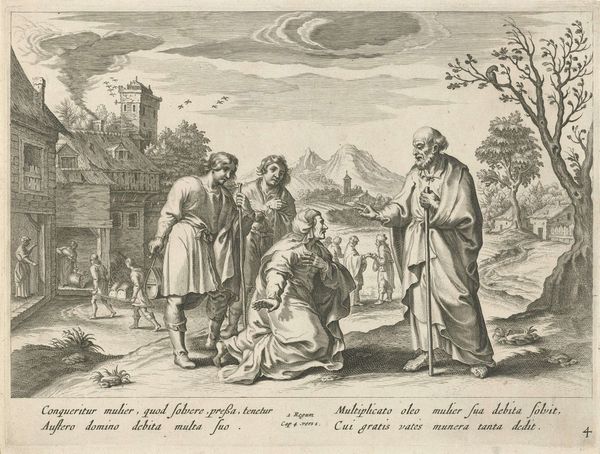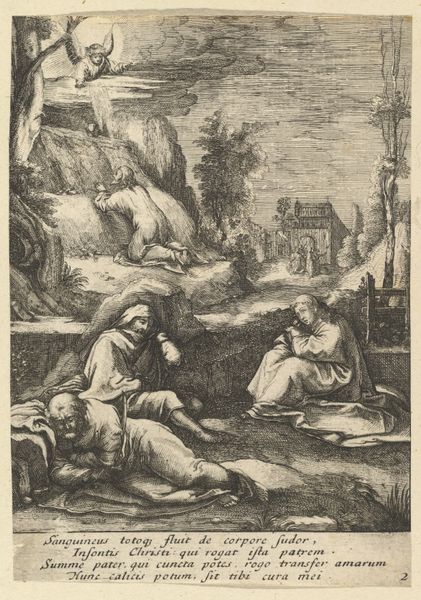
print, etching, engraving
#
baroque
# print
#
etching
#
landscape
#
history-painting
#
engraving
Dimensions: height 128 mm, width 108 mm
Copyright: Rijks Museum: Open Domain
Editor: This print, "Majombe en Konstance en rustende figuren," by Pieter Nolpe, made around 1643, combines etching and engraving. I find the figures so compelling, but their expressions are… ambiguous, almost staged. What can you tell me about what’s happening in this scene? Curator: Well, we can start by recognizing that Nolpe, though Dutch, situates this biblical scene in an Italianate landscape. What's the effect of this choice, do you think, when considering its potential audience? Editor: I suppose it connects the biblical narrative to a sense of grandeur and timelessness through its setting. Does this relate to the period? Curator: Absolutely. Baroque art often used history painting and landscapes to evoke specific emotions. The architecture on the horizon suggests ruins. Note the classical, Italianate ruins amidst the resting figures; what could that suggest to you? Editor: Perhaps that even biblical narratives were interpreted through the lens of European power and historical understanding. And perhaps also fragility - as we can see with those ruins. Curator: Precisely. Nolpe's work reflects a time of great cultural exchange, when biblical stories were shaped through contemporary values, artistic and political movements. We see that manifested through history painting. Who would see these prints, and where do you think they'd see them? Editor: Wealthier patrons? Perhaps these prints were for display in their homes? Curator: Yes, domestic spaces became sites of moral contemplation and markers of status. What this work visualizes are Dutch Protestant sensibilities of a moralized image making its way into social, domestic life. Editor: So, it's not just an image. It is an assertion of values within the home. Fascinating to view art in this setting. Curator: Precisely, the scene’s significance shifts based on its role as an agent within broader historical currents, institutions and the visual politics of imagery at the time. Thanks for these great insights.
Comments
No comments
Be the first to comment and join the conversation on the ultimate creative platform.
